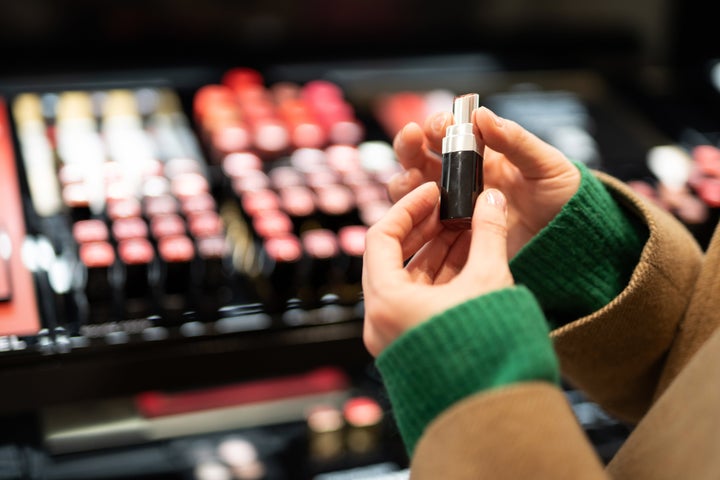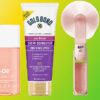🔴 Website 👉 https://u-s-news.com/
Telegram 👉 https://t.me/usnewscom_channel
Many beauty lovers don’t realize that some of their favorite skin care, makeup and hair care products may be hiding persistent, bioaccumulative and toxic substances (PBTs) — chemicals that build up in the body and environment over time.
While most ingredients are harmless, a few have been linked to concerns like endocrine disruption and reproductive issues.
The good news? You don’t have to overhaul your entire routine overnight. Here’s how to spot the sneaky stuff, understand what it means for your health (and the planet) and make swaps for cleaner, safer beauty.
Why These Chemicals Are In Your Products In The First Place
Per- and polyfluoroalkyl substances (PFAS), phthalates and parabens are ingredients that often show up in mascaras, foundations and liquid lipsticks because they offer performance-enhancing properties that are challenging to replicate. “These may include enhancing product longevity, improving water resistance, stabilizing volatile ingredients, or preventing microbial growth to extend shelf life,” explained Krupa Koestline, a clean cosmetic chemist and founder of KKT Labs.
PFAS, for example, help waterproof mascaras and long-wear lipsticks stay put, while phthalates are usually tucked into fragrances to help scents linger longer and keep perfumes, lotions and hair care products shelf-stable. Then there are parabens, which are widely used preservatives in cosmetics, skin care and hair care to ward off microbial growth. Koestline points out that products that rely heavily on these functions, like long-lasting makeup and scented lotions, are more likely to contain higher levels of these questionable ingredients.
How To Spot Sneaky Toxins In Beauty Products
Since ingredient labels aren’t always straightforward, it often falls on consumers to decode them. Here’s what to watch for and how to cut through the buzzwords.
Yashi Shrestha, co-founder of and head of chemistry and sustainability at Novi, a platform that helps consumer brands develop sustainable and transparent products, points to four ingredient groups you’ll want to keep on your radar due to their chemical makeup, tendency to accumulate in the body and known health risks: PFAS, formaldehyde releasers, cyclic silicones and butylated hydroxytoluene (BHT).
PFAS, in particular, are notorious for lingering both in the environment and in our bodies because of their strong carbon-fluorine bonds and have been linked to endocrine disruption, liver toxicity and even cancer. “To identify PFAS ingredients in cosmetic labels, look for PTFE, perfluorooctanoic acid or anything that starts with ‘perfluoro’ or ‘polyfluoro,’” Shrestha said.
Oscar Wong via Getty Images
Formaldehyde-releasing preservatives, like DMDM hydantoin, imidazolidinyl urea and quaternium-15, are often used in water-based cosmetics and hair care products to fight off microbial growth, and work by slowly releasing formaldehyde, a known carcinogen and respiratory irritant. “Even at low levels, formaldehyde can cause contact dermatitis and allergic reactions, particularly for those with sensitive skin,” Shrestha said.
Then there are cyclic silicones like cyclotetrasiloxane (D4) and cyclopentasiloxane (D5), which are used for providing smooth texture and quick drying properties in primers and foundations. “However, D4 and D5 have been raised as a concern for their bioaccumulation in the environment and potential endocrine disruption effects,” Shrestha said. Though flagged by the European Chemicals Agency (ECHA) for their persistence and potential to disrupt hormones, they’re still allowed in U.S. cosmetics. Finally, BHT, an antioxidant commonly used to extend a product’s shelf life, has raised concerns for its links to endocrine disruption and association with neurotoxicity.
Don’t Be Fooled By Marketing Buzzwords
Beyond individual ingredients, there’s another sneaky culprit that often flies under the radar. “If you see ‘fragrance’ or ‘parfum’ without a breakdown of its components, it’s a red flag,” said Shrestha, calling out a labeling loophole in cosmetics. “These terms are legally protected as ‘trade secrets,’ allowing brands to avoid disclosing the full chemical composition of their fragrance blends in order to maintain proprietary formulas.” Those terms can hide dozens, sometimes even hundreds, of individual chemicals, allowing questionable ingredients to slip through supply chains and into your everyday beauty routine. “This lack of transparency is especially common in perfumes, hair care and styling products, and long-wear makeup where scent and performance play a big role in consumer appeal,” said Shrestha, who recommends opting for fragrance-free versions of your go-tos whenever possible.
Buzzy marketing terms should also be viewed with a critical eye. “The words ‘natural’ and ‘organic’ on the label do not necessarily mean the product is clean, neither guaranteeing that the entire formulation is derived from natural sources nor that the product is safe for your skin,” explained Valerie Aparovich, biochemist and science team lead at OnSkin. While natural and organic ingredients can have skin care benefits, they can also increase the risk of allergic reactions due to the high content of natural fragrances and preservatives. Aparovich adds that the best-performing organic formulas often mix both natural and synthetic ingredients. “The key consideration is whether each component is non-toxic and poses no risks to human health, as only this criterion can justify referring to a product as ‘clean.’”

wera Rodsawang via Getty Images
It’s also a good idea to seek out trusted third-party industry certifications that back up the brand’s claims, which can help you spot products that meet globally recognized safety standards. “Look for third-party verification from organizations like Made Safe, EWG, Cradle to Cradle, and Cosmos Organic to ensure product safety,” Shrestha advised.
In addition to ingredient transparency, Yashi emphasizes the importance of considering ingredient sourcing. “Look for companies that openly share where and how their ingredients are sourced, signaling a commitment to both product safety and environmental responsibility.”
How To Clean Up Your Beauty Routine
Revamping your beauty stash doesn’t have to mean a complete overhaul overnight, which can be a little overwhelming. “Start by replacing the products you contact most frequently, especially daily essentials like moisturizer, sunscreen and complexion products,” said Aparovich, noting that your face is the most exposed part of your skin, constantly battling both environmental stressors and cosmetic ingredients.
Next up, Aparovich recommends swapping out lip balms, glosses and lipsticks, since they often end up being ingested without you even realizing it. And don’t forget about the eyes. Products like eye cream, eye shadows, eye pencils and concealers should get extra attention, as the skin around your eyes is thinner and more sensitive, with a higher risk of contact with the conjunctiva, the clear membrane that protects your eye. Finally, tackle those products you slather on larger areas, like body lotions and sunscreens.
No matter where you’re applying your products, it’s crucial to stay vigilant about what’s inside. “Just because you know what something is free of, doesn’t mean you know what it’s full of. Always check the full list to understand what’s actually in the product,” said Shrestha, stressing that full ingredient transparency is key when cleaning up your beauty routine.

